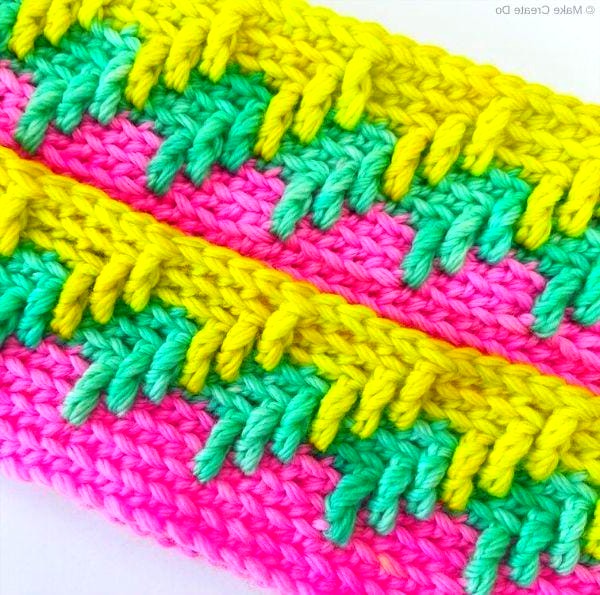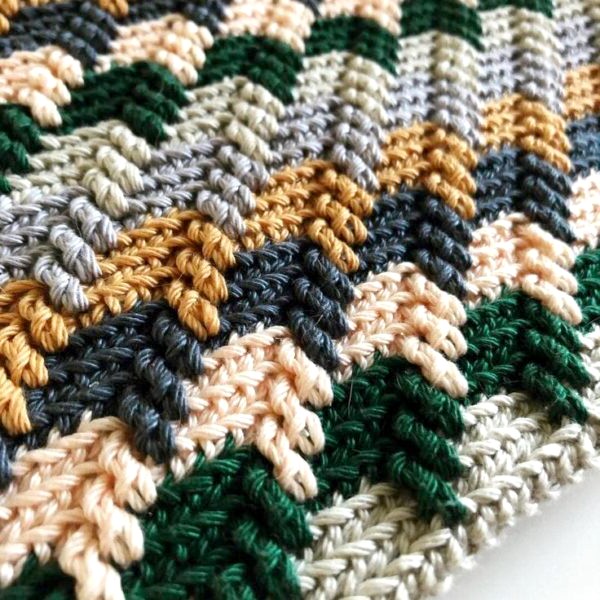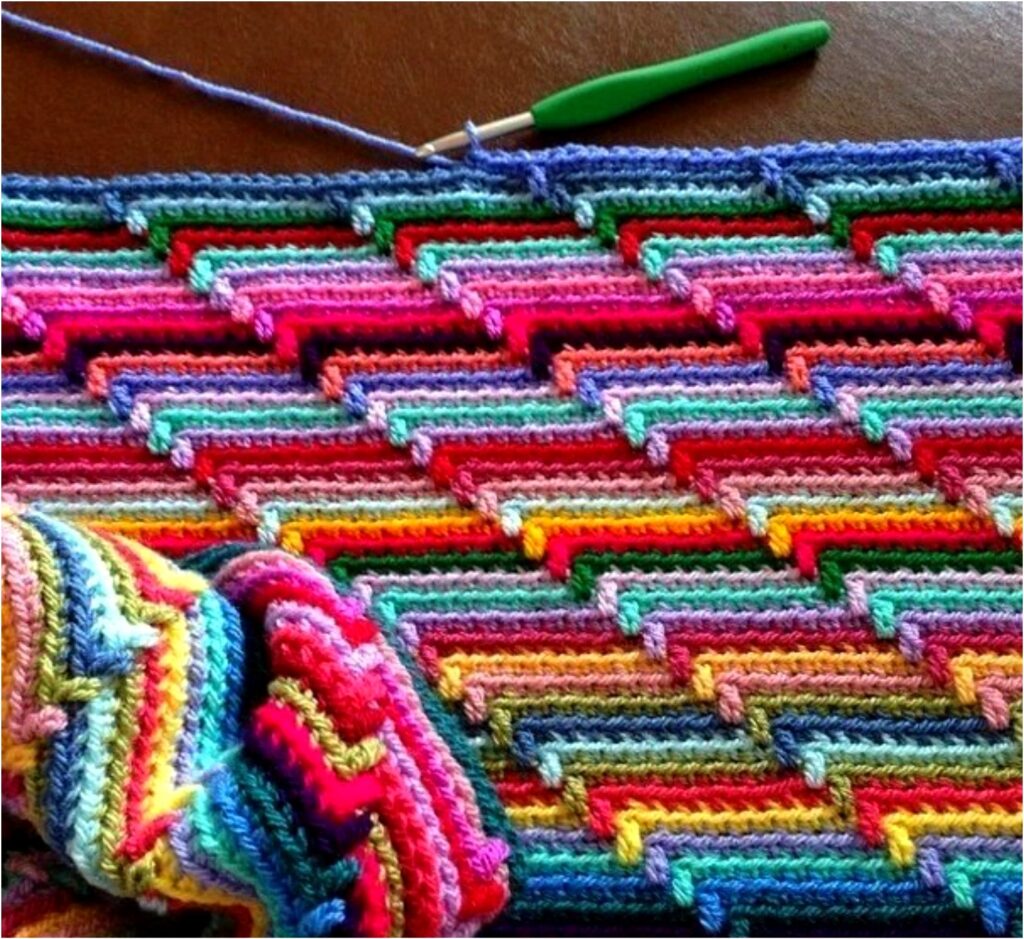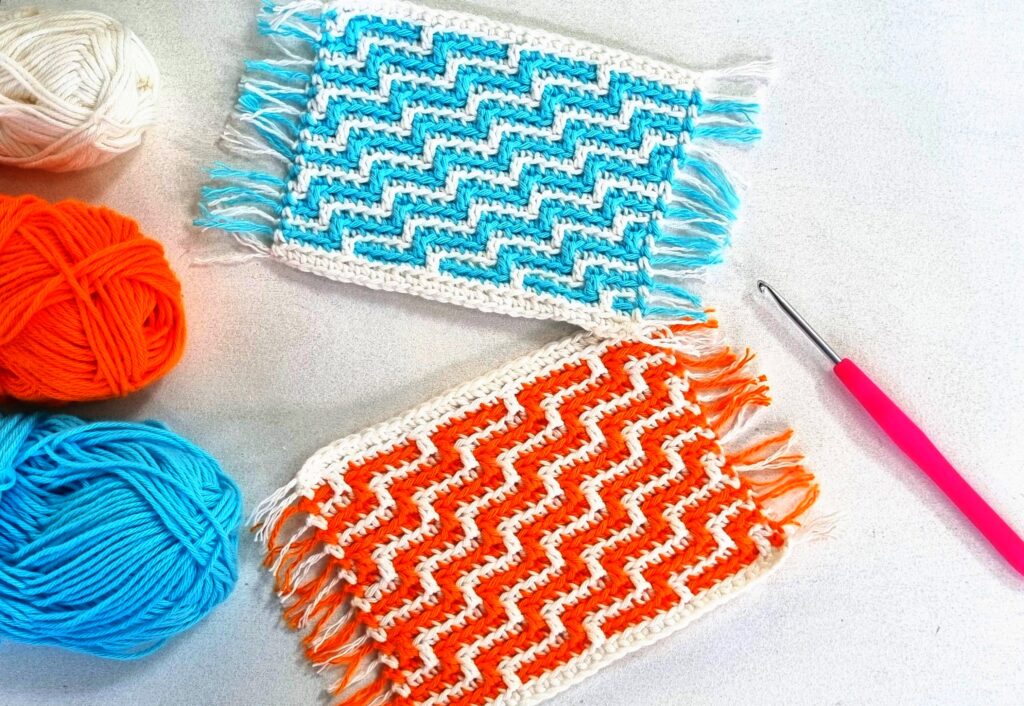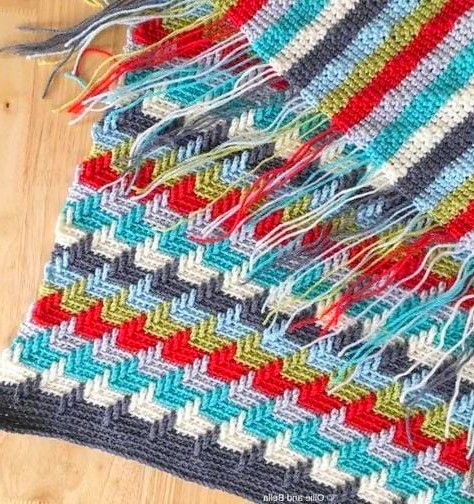The Apache Tears Crochet Pattern is a visually striking and highly textured design that creates a cascading, layered effect resembling teardrops. This stunning pattern is perfect for blankets, scarves, and even home décor pieces like pillow covers and table runners. The technique involves a combination of single crochet and front post double crochet stitches to achieve the signature “teardrop” effect, making it an ideal choice for projects where you want a bold and dramatic texture.
In this guide, we’ll explore the origins of the Apache Tears pattern, the materials and techniques needed to crochet it, and step-by-step instructions to create your own Apache Tears masterpiece.
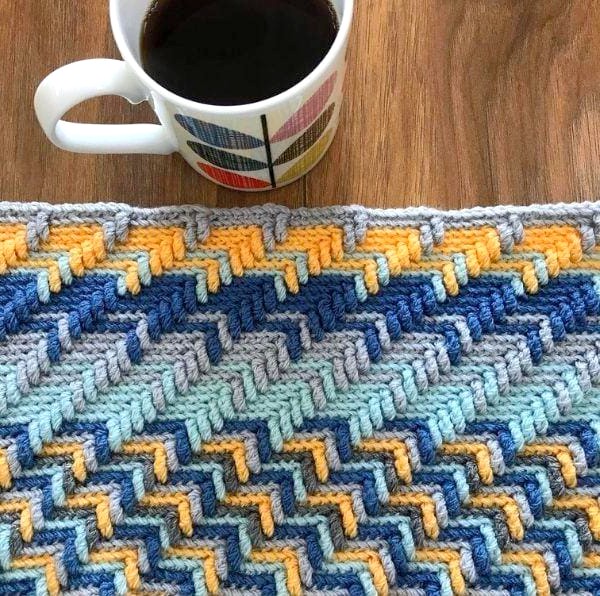
A Brief History of the Apache Tears Pattern
The name “Apache Tears” is inspired by the black obsidian stones of the same name, which are often associated with healing and protection. The crochet pattern mimics the cascading look of these smooth, rounded stones, with the elongated stitches appearing like flowing tears. While not directly linked to Apache traditions, the name captures the dynamic and flowing nature of the design.
This pattern is particularly loved in the crochet community for its dimensional texture, color-changing possibilities, and bold visual impact. Although it looks intricate, it is surprisingly achievable with a bit of patience and practice.
Why You’ll Love the Apache Tears Pattern
✔ Striking Visual Appeal: The 3D effect makes it stand out in any project.
✔ Great for Color Play: The pattern is perfect for vibrant, high-contrast color combinations.
✔ Versatile: Ideal for blankets, scarves, shawls, bags, and even wall hangings.
✔ Intermediate Level Friendly: Uses basic stitches, with the front post double crochet as the key technique.
✔ Works with Any Yarn Weight: Adjust the hook size to suit your yarn choice.
Materials You’ll Need
Before starting, gather the following materials:
1. Yarn Choices
- Acrylic, cotton, or wool yarn all work well.
- Choose at least two contrasting colors to highlight the teardrop effect.
- Recommended yarn weight: Worsted (Medium #4) or DK (Light #3).
2. Crochet Hook
- 4.5mm to 5.5mm hook (adjust according to your yarn weight).
- A smaller hook creates tighter stitches, while a larger hook gives a looser effect.
3. Other Supplies
- Tapestry needle – For weaving in ends.
- Scissors – To cut yarn when changing colors.
- Stitch markers (optional) – Helpful for keeping track of rows.
Understanding the Apache Tears Stitch
The Apache Tears pattern is based on simple stitches arranged in a structured way:
- Single Crochet (sc) – The foundation for most rows.
- Double Crochet (dc) – Used in the base rows.
- Front Post Double Crochet (fpdc) – The most important stitch, creating the “teardrop” effect.
Special Stitch: Front Post Double Crochet (fpdc)
The fpdc is what gives the Apache Tears its signature cascading look. Here’s how to make it:
- Yarn over, and insert your hook around the post of the stitch below (not into the top loops).
- Yarn over, and pull up a loop (you now have 3 loops on your hook).
- Yarn over, and pull through 2 loops.
- Yarn over, and pull through the last 2 loops.
This technique pulls the stitch forward, creating a raised, tear-like effect.
Step-by-Step Instructions for the Apache Tears Pattern
Foundation Row
- Using Color A, chain a multiple of 4 + 3 (e.g., 35, 43, 51) to achieve your desired width.
- Row 1: Work single crochet across the entire row.
Starting the Apache Tears Effect
-
Row 2 (Base Row):
- Switch to Color B at the last stitch of Row 1.
- Chain 1, then work single crochet stitches across.
-
Row 3 (First Set of Tears):
- Continue with Color B.
- Work single crochet stitches across, except every 4th stitch, where you will place a front post double crochet (fpdc) around a stitch two rows below.
- Repeat across the row.
-
Row 4:
- Switch back to Color A.
- Work a regular row of single crochet stitches.
Building the Cascading Effect
-
Row 5:
- With Color A, start the next row of front post double crochets, but stagger them between the previous row’s fpdc stitches (so they align in a flowing pattern).
- Continue this alternating pattern for as many rows as needed.
-
Repeat Rows 4 and 5, switching colors every two rows, until your project reaches the desired length.
Tips for Perfect Apache Tears
✔ Use high-contrast colors – This helps make the tears stand out.
✔ Maintain even tension – If your stitches are too tight, the pattern won’t drape properly.
✔ Count stitches carefully – The staggered effect depends on proper placement.
✔ Block your work – Light blocking helps the stitches relax and enhances the design.
Common Variations of Apache Tears
🔸 Classic Apache Tears: Alternating rows of contrasting colors.
🔸 Monochrome Apache Tears: One color for subtle texture.
🔸 Rainbow Apache Tears: A different color for each row, creating a vibrant, cascading effect.
🔸 Apache Waves: A modification using a mix of fpdc and fp treble crochet for more pronounced curves.
Project Ideas Using Apache Tears
📌 Apache Tears Blanket: A cozy, textured throw for your home.
📌 Scarves & Shawls: Use lightweight yarn for an airy yet structured look.
📌 Pillows & Cushions: A striking statement piece for sofas or chairs.
📌 Tote Bags: The durable texture makes for sturdy and stylish accessories.
📌 Wall Hangings: Turn the pattern into a decorative textile piece.
Care Instructions for Apache Tears Crochet Items
- Hand wash or machine wash on gentle (depending on yarn choice).
- Use mild detergent to maintain color vibrancy.
- Lay flat to dry to preserve shape.
- Store folded to prevent stretching.
Video Tutorial:
For those who gravitate towards visual guidance, worry not—we have just the resource for you. I highly suggest immersing yourself in this meticulously crafted tutorial, tailored precisely for those who absorb knowledge more effectively through visual demonstrations rather than textual instructions. This invaluable video, brought to you by the esteemed All Crafts Channel, serves as an excellent guide. You can access the You can find the video tutorial here.
Final Thoughts
The Apache Tears Crochet Pattern is a fantastic choice for those who love bold textures and colorwork. Whether you’re crafting a cozy blanket or a stylish accessory, this pattern allows for endless creativity and customization. While it may seem complex at first, with practice, it becomes a rhythmic and rewarding project.


